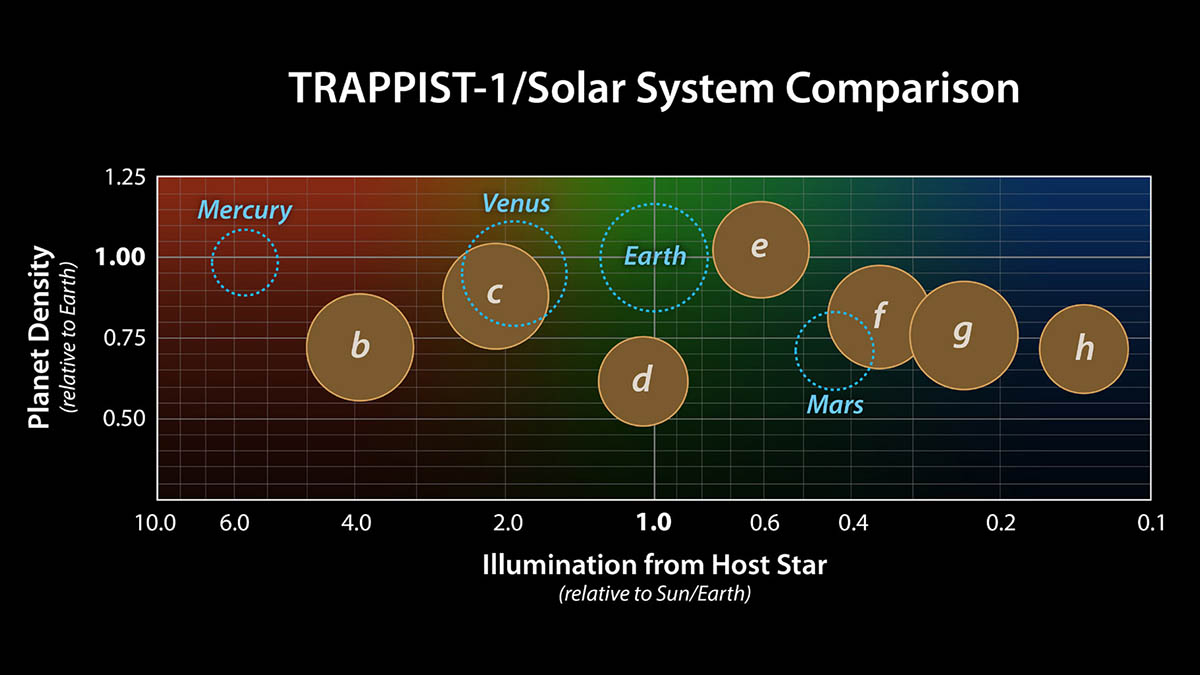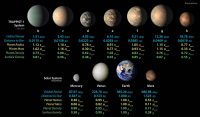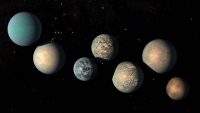This graph presents known properties of the seven TRAPPIST-1 exoplanets (labeled b thorugh h), showing how they stack up to the inner rocky worlds in our own solar system. (NASA/JPL-Caltech)
Home This graph presents known properties of the seven TRAPPIST-1 exoplanets (labeled b thorugh h), showing how they stack up to the inner rocky worlds in our own solar system. (NASA/JPL-Caltech) This graph presents known properties of the seven TRAPPIST-1 exoplanets (labeled b thorugh h), showing how they stack up to the inner rocky worlds in our own solar system. (NASA/JPL-Caltech)




